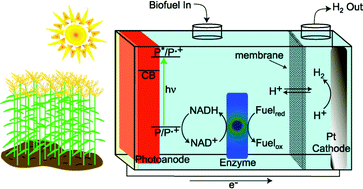Parameters affecting the chemical work output of a hybrid photoelectrochemical biofuel cell†
Abstract
A hybrid photoelectrochemical biofuel cell employing the photoanode architecture of a

- This article is part of the themed collection: In honour of Vincenzo Balzani

 Please wait while we load your content...
Please wait while we load your content...